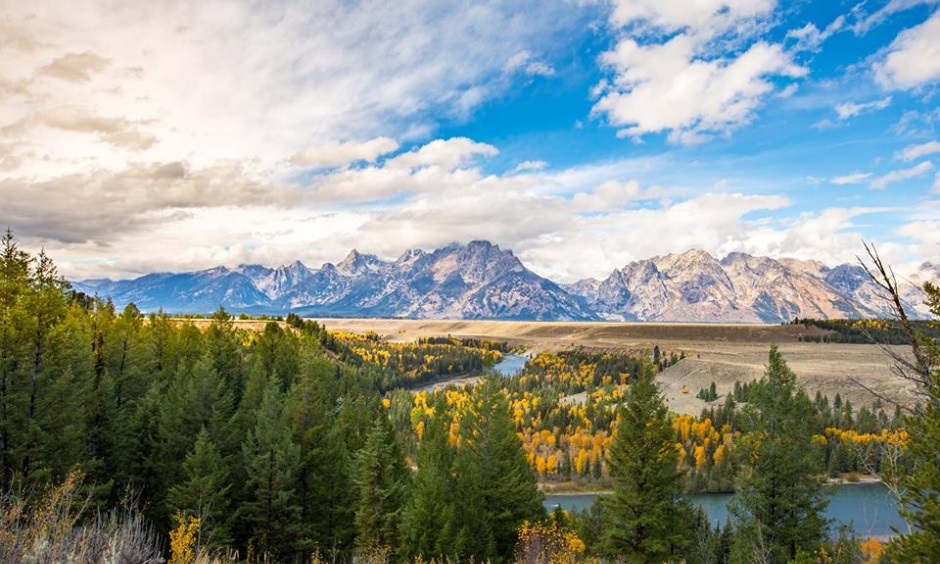News Release

NPS Photo
News Release Date: December 28, 2016
Contact: Jeremy Barnum, 202-208-6843
WASHINGTON – National Park Service (NPS) Director Jonathan B. Jarvis today signed Director’s Order #21 on Donations and Philanthropic Partnerships. The Director’s Order updates internal NPS policy on engagement in public-private partnerships and the appropriate acceptance of support from the private sector to better align the bureau with current best practices in philanthropy.“These updates bring the long history of philanthropic support for America’s national parks into the 21st century,” Jarvis said.
Recognizing the changing nature of philanthropy in the digital age, the NPS and the National Park System Advisory Board in 2014 began the process of updating NPS philanthropic partnership guidance. The resulting changes, Jarvis said, “provide the framework and flexibility to work with a diverse range of philanthropic partners, including individuals, start-up organizations, and long-established partners with years of demonstrated success in supporting national parks.”
The national park idea benefited from private contributions even before Congress created the National Park Service in 1916. In 1907 Mr. and Mrs. William Kent donated what became Muir Woods National Monument, California. Later, John D. Rockefeller, Jr. and his son Laurance S. Rockefeller gave millions for land and roads to enlarge and improve Acadia, Grand Teton, Great Smoky Mountains, Virgin Islands, and Yosemite National Parks to name a few. Just this month, U.S. Secretary of the Interior Sally Jewell and Wyoming Governor Matt Mead announced the purchase and permanent protection of a 640-acre parcel land located within Grand Teton National Park made possible through a public-private partnership involving the Department of the Interior, Grand Teton National Park Foundation and National Park Foundation. The $46 million purchase price was split equally between the Department of the Interior and the non-federal partners.
A revised draft Director’s Order went out for a 45-day public review period that ended on May 16, 2016. During that time, 350 comments were received. The public review period also drew some misleading and in some cases inaccurate headlines and stories suggesting that corporations would be able to obtain naming rights to park features or parks themselves and that park superintendents would be forced to raise private funds.
“Whether or not people and organizations fully understood the proposed changes it was clear that people place great value on national parks and are insistent that they be protected as they belong to all of us,” Jarvis said of the initial misunderstandings over the draft policy.
“While there will continue to be opportunities for limited donor recognition in parks, no one is going to commercialize national parks and park superintendents still won’t be allowed to solicit donations,” Jarvis said. “We have federal law to back us up on that.”
The policy and public law prohibit any donor recognition that could be used to state or imply “naming rights to any unit of the National Park System or a National Park System facility, historic structure, trail, or feature, including a visitor center.” Advertising and marketing slogans are also prohibited. The policy does include provisions similar to those of universities, museums, and hospitals across the country, under which rooms or galleries inside facilities, may be temporarily named to recognize a donor for support of the renovations to that facility. Any such recognition must be authorized by the Director of the National Park Service.
The final Director’s Order on Donations and Philanthropic Partnerships signed by Director Jarvis includes changes from the earlier draft based on feedback from the general public and other interested groups. For example, per the original 2008 policy, logos are permitted as part of acknowledgments of support in printed material, audiovisual products, and temporary construction/restoration signs. The proposed revisions to that policy earlier this year would have also allowed small logos of philanthropic partners to be placed on exhibits and waysides. However, that provision has been removed.
Changes to the policy will help the NPS and its partners to keep up with a changing philanthropic field that has become increasingly sophisticated and competitive.
“As we kick off the second century of the National Park Service, these improved partnership and philanthropy guidelines will give a new generation of Americans the opportunity to support their national parks through the 21st century and beyond,” Jarvis said.
The main revisions to the policy include:
- Simplifying the agreement process with philanthropic partners.
- Streamlining internal business practices.
- Recognizing the importance of all types of philanthropy including in-kind donations and volunteerism.
- Broadening the scope of philanthropic giving through electronic donations, mobile giving,
- and individual and planned giving.
- Providing clearer guidance on donor recognition.
- Updating guidance for sharing intellectual property and the use of NPS marks and logos.
- Maintaining the integrity and impartiality of the National Park Service in all facets of its philanthropic efforts.
The full Director’s Order is available here: https://www.nps.gov/policy/DOrders/DO_21.htm
About the National Park Service. More than 20,000 National Park Service employees care for America's 413 national parks and work with communities across the nation to help preserve local history and create close-to-home recreational opportunities. Visit us at www.nps.gov, on Facebook www.facebook.com/nationalparkservice, Twitter www.twitter.com/natlparkservice, and YouTube www.youtube.com/nationalparkservice.
Last updated: March 8, 2017
